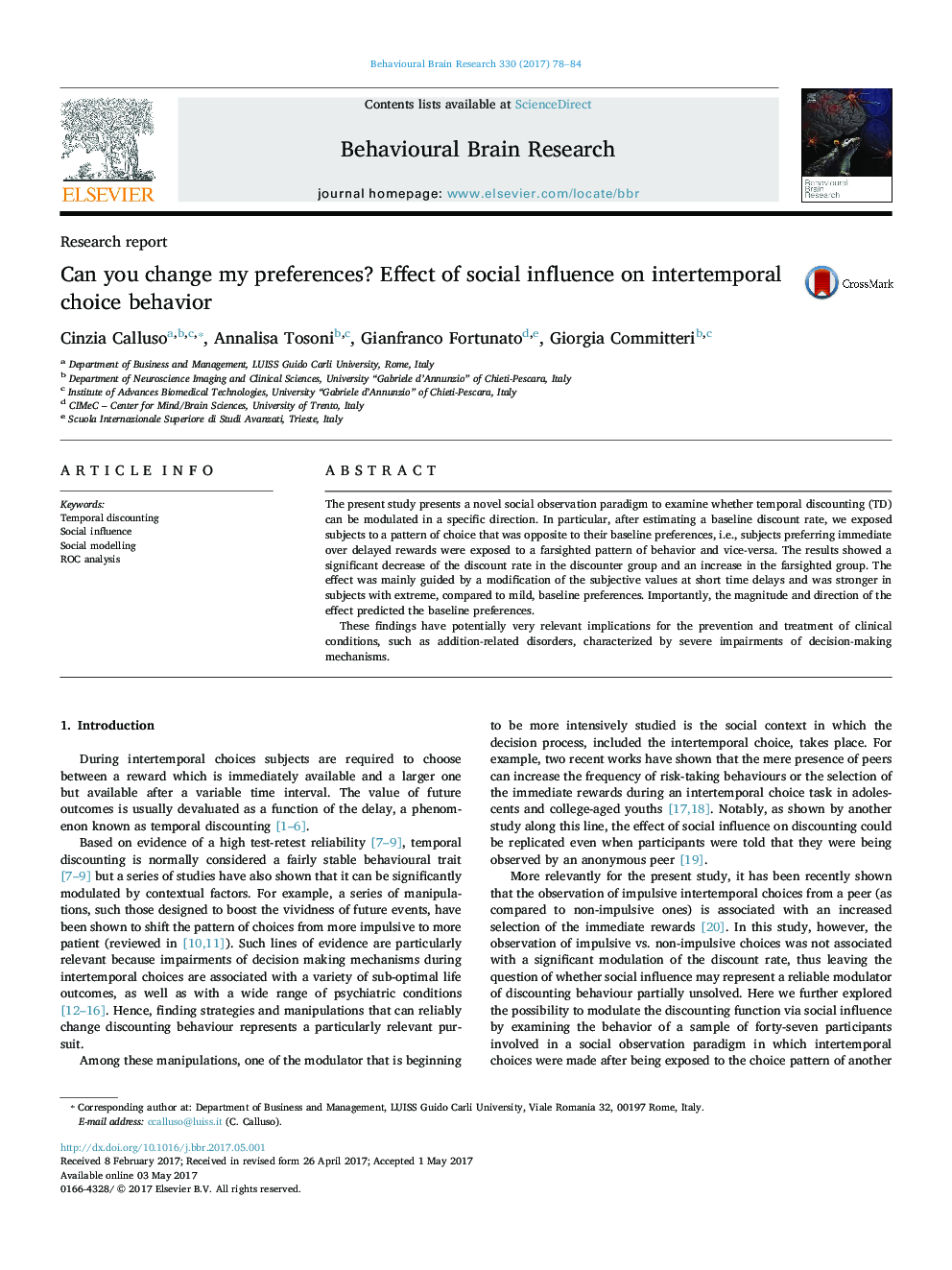| Article ID | Journal | Published Year | Pages | File Type |
|---|---|---|---|---|
| 5735060 | Behavioural Brain Research | 2017 | 7 Pages |
â¢Discounters become farsighted while observing a farsighted pattern of choices.â¢Farsighted become discounters while observing a discounter pattern of choices.â¢The change in discount rate is larger in subjects with extreme vs. mild preferences.â¢The magnitude of the change does not differ between discounters vs. farsighted subjects.â¢The magnitude of the change is a reliable group predictor.
The present study presents a novel social observation paradigm to examine whether temporal discounting (TD) can be modulated in a specific direction. In particular, after estimating a baseline discount rate, we exposed subjects to a pattern of choice that was opposite to their baseline preferences, i.e., subjects preferring immediate over delayed rewards were exposed to a farsighted pattern of behavior and vice-versa. The results showed a significant decrease of the discount rate in the discounter group and an increase in the farsighted group. The effect was mainly guided by a modification of the subjective values at short time delays and was stronger in subjects with extreme, compared to mild, baseline preferences. Importantly, the magnitude and direction of the effect predicted the baseline preferences.These findings have potentially very relevant implications for the prevention and treatment of clinical conditions, such as addition-related disorders, characterized by severe impairments of decision-making mechanisms.
Graphical abstractDownload high-res image (204KB)Download full-size image
